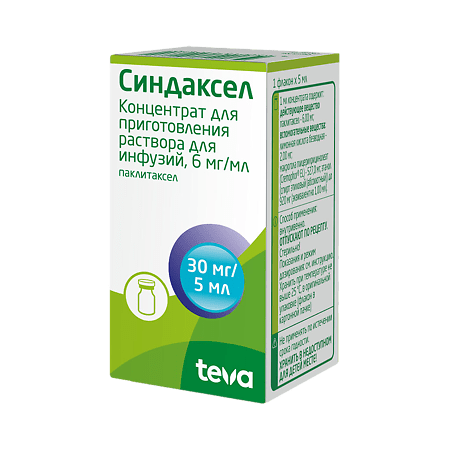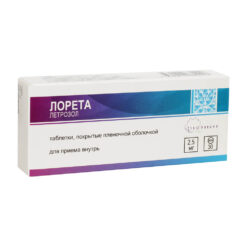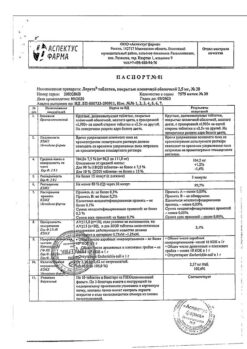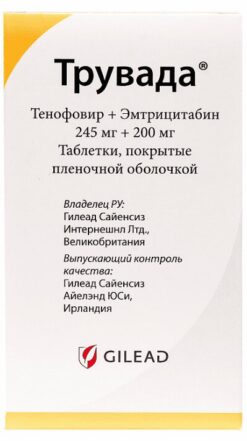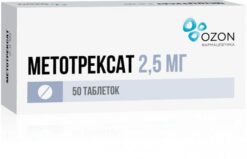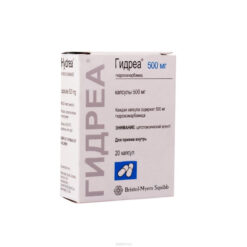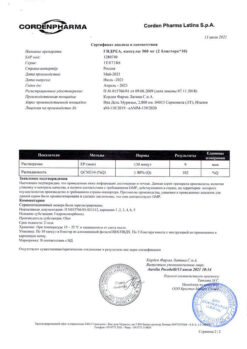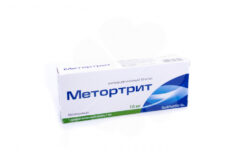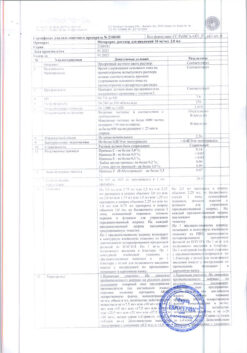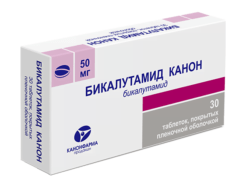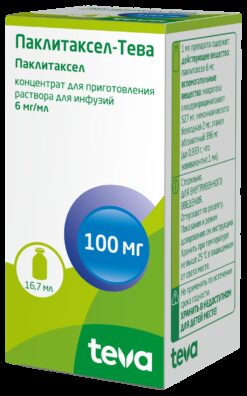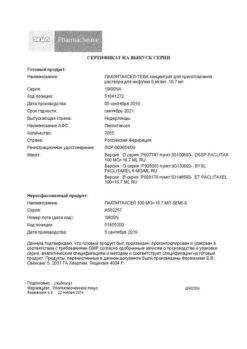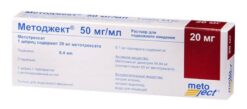No products in the cart.
Description
Pharmacotherapeutic group: antitumor drug, alkaloid ATC code: L01CD01
Pharmacological properties
Packlitaxel is an antitumor drug produced semi-synthetically. Mechanism of action is related to the ability to stimulate the assembly of microtubules from dimeric tubulin molecules, stabilize their structure by inhibiting depolymerization and inhibit dynamic reorganization in interphase which disrupts mitotic function of the cell. In addition, paxitaxel induces the formation of abnormal clusters, or “bundles”, of microtubules throughout the cell cycle and causes the formation of multiple microtubule stars during mitosis.
According to experimental data, it has mutagenic and embryotoxic properties and causes decreased reproductive function.
Pharmacokinetics
Paclitaxel plasma concentration after intravenous administration decreases according to biphasic kinetics.
Paclitaxel pharmacokinetics were determined after infusions of the drug at doses of 135 and 175 mg/m2 for 3 and 24 hours. The elimination half-life and total clearance of paclitaxel are variable and depend on the dose and duration of administration: from 13.0 to 52.7 hours and from 12.2 to 23.8 L/h/m2, respectively. Mean volume of distribution ranges from 198 to 688 l/m2.
In multiple courses of treatment no cumulation of paclitaxel has been noted. Binding to plasma proteins averages 89%.
In in vitro studies on liver microsomes it was found that paclitaxel is metabolized in the liver with the participation of CYP2C8 isoenzyme to
6-alpha-hydroxypaclitaxel and with the participation of CYP3A4 isoenzyme to 3-para-hydroxypaclitaxel and 6-alpha, 3-para-hydroxypaclitaxel.
Evacuation. After intravenous infusion of paclitaxel (15-275 mg/m2) for 1, 6, or 24 hours, 1.3-12.6% of the administered dose was excreted unchanged by the kidneys. After a 3-hour infusion of radioactively labeled paclitaxel at doses of 225-250 mg/m2, within 120 hours 14% of the radioactivity was excreted by the kidneys, 71% – by the intestine. 5% of the administered radioactivity was excreted unchanged by the intestine, the remainder being metabolites, mainly 6-alpha-hydroxypaclitaxel.
Indications
Indications
Ovarian cancer
First-line therapy in combination with platinum drugs in patients with advanced ovarian cancer or residual tumor (>1 cm) after initial laparotomy;
second-line therapy in patients with metastatic ovarian cancer after standard therapy has not led to a positive result.
Breast cancer
adjuvant therapy in patients with metastases in the lymph nodes after standard combination therapy;
first-line therapy in patients with late-stage cancer or metastatic cancer after relapse of the disease within 6 months after the start of adjuvant therapy, including anthracycline drugs, in the absence of contraindications for their use;
first-line therapy in patients with late-stage or metastatic breast cancer in combination with anthracycline drugs in the absence of contraindications for their use, or in combination with trastuzumab in patients with immunohistochemically confirmed 2+ or 3+ HER-2 levels;
Second-line therapy in patients with advanced or metastatic cancer who have progressed after combination chemotherapy. Previous therapy should include anthracycline drugs in the absence of contraindications for their use.
Non-small cell lung cancer
First-line therapy in combination with cisplatin or as monotherapy in patients who are not planned for surgery and/or radiation therapy.
Kaposi’s sarcoma due to AIDS
second line therapy.
Pharmacological effect
Pharmacological effect
Pharmacotherapeutic group: antitumor agent, alkaloid ATC code: L01CD01
Pharmacological properties
Pharmacodynamics
Paclitaxel is an antitumor drug obtained semisynthetically. The mechanism of action is associated with the ability to stimulate the assembly of microtubules from dimeric tubulin molecules, stabilize their structure by suppressing depolymerization and inhibit dynamic reorganization in interphase, which disrupts the mitotic function of the cell. In addition, paxitaxel induces the formation of abnormal clusters, or “bundles,” of microtubules throughout the cell cycle and causes the formation of multiple microtubule asters during mitosis.
According to experimental data, it has mutagenic and embryotoxic properties and causes a decrease in reproductive function.
Pharmacokinetics
The concentration of paclitaxel in blood plasma after intravenous administration decreases in accordance with biphasic kinetics.
The pharmacokinetics of paclitaxel was determined after infusions of the drug at doses of 135 and 175 mg/m2 for 3 and 24 hours. The half-life and total clearance of paclitaxel are variable and depend on the dose and duration of administration: from 13.0 to 52.7 hours, from 12.2 to 23.8 l/h/m2, respectively. The average volume of distribution ranges from 198 to 688 l/m2.
With multiple courses of treatment, accumulation of paclitaxel was not observed. The binding to plasma proteins averages 89%.
In vitro studies on liver microsomes revealed that paclitaxel is metabolized in the liver with the participation of the CYP2C8 isoenzyme to
6-alpha-hydroxypaclitaxel and with the participation of the CYP3A4 isoenzyme to 3-para-hydroxypaclitaxel and 6-alpha, 3-para-dihydroxypaclitaxel.
Excretion. After intravenous infusion of paclitaxel (15-275 mg/m2) over 1, 6 or 24 hours, 1.3-12.6% of the administered dose was excreted unchanged by the kidneys. After a 3-hour infusion of radiolabeled paclitaxel in doses of 225-250 mg/m2, over 120 hours, 14% of the radioactivity was excreted by the kidneys, 71% by the intestines. 5% of the administered radioactivity was excreted unchanged by the intestines, the rest were metabolites, mainly 6-alphahydroxypaclitaxel.
Special instructions
Special instructions
The use of Syndaxel should be under the supervision of a physician experienced in working with anticancer chemotherapy drugs. Syndaxel should be used as a diluted solution. Before administering the drug, patients should be premedicated with glucocorticosteroids and H1 and H2 histamine receptor blockers. If Syndaxel is used in combination with cisplatin, Syndaxel should be administered first followed by cisplatin.
Anaphylaxis and serious hypersensitivity reactions
In less than 1% of patients, despite premedication, serious hypersensitivity reactions were observed during treatment with Syndaxel. The frequency and severity of such reactions did not depend on the dose or schedule of administration of the drug. With the development of severe reactions, the most commonly observed symptoms were suffocation, hot flashes, chest pain, tachycardia, as well as abdominal pain, pain in the extremities, increased sweating, and increased blood pressure.
If severe hypersensitivity reactions develop, administration of Syntaxel should be stopped immediately and, if necessary, symptomatic treatment should be prescribed; in such cases, repeated courses of treatment with the drug should not be prescribed.
Reactions at the injection site
During intravenous administration of the drug, the following usually mild reactions at the injection site were observed: swelling, pain at the injection site, erythema, tenderness at the injection site, induration at the injection site, hemorrhages, which can lead to the development of cellulite. Such reactions were observed more often with a 24-hour infusion than with a 3-hour infusion. In some cases, the onset of such reactions was observed both during the infusion and 7-10 days after it.
Myelosuppression
Bone marrow suppression (mainly neutropenia) is dose- and dosage-dependent and is the main dose-limiting toxicity. For example, when cisplatin is administered at a dose of 75 mg/m2 and Syndaxel at a dose of 175 mg/m2 as a 3-hour infusion, severe neurotoxicity is observed more often than when Sindaxel is administered at a dose of 135 mg/m2 as a 24-hour infusion, i.e. The duration of infusion has a greater influence on the risk of developing myelosuppression than the dose. In patients with a history of previous radiotherapy, neutropenia developed less frequently and to a milder extent, and did not worsen as the drug accumulated in the body.
In patients with ovarian cancer, the risk of renal failure is higher when using the combination of Syndaxel + cisplatin compared to cisplatin monotherapy. Infections were very common and sometimes fatal, including sepsis, pneumonia and peritonitis. Urinary and upper respiratory tract infections were noted as the most common complicated infections. At least one opportunistic infection has been reported in immunosuppressed patients, patients with HIV infection, and patients with AIDS-related Kaposi’s sarcoma.
The use of maintenance therapy, including granulocyte colony-stimulating factor, is recommended for patients who have experienced severe neutropenia. A decrease in platelet count below 100,000/μl was observed at least once during the entire period of therapy with Syndaxel, sometimes the platelet count was below 50,000/μl. There were also cases of bleeding, most of which were local, and the frequency of their occurrence was not associated with the dose of Syndaxel and the administration schedule. When using the drug Syndaxel, it is necessary to regularly monitor the blood picture. The drug should not be prescribed to patients with a neutrophil count of less than 1500/μL and less than 1000/μL with Kaposi’s sarcoma due to AIDS, and with a platelet count of less than 100,000/μL (75,000/μL in patients with Kaposi’s sarcoma due to AIDS). With the development of severe neutropenia (less than 500/μL
µl) or severe peripheral neuropathy during treatment with Syndaxel, in subsequent courses of treatment it is recommended to reduce the dose by 20% (in patients with Kaposi’s sarcoma due to AIDS – by 25%).
Effect on the cardiovascular system
The decrease, increase in blood pressure and bradycardia observed during the administration of Syntaxel are usually asymptomatic and in most cases do not require treatment. A decrease in blood pressure and bradycardia was usually observed during the first 3 hours of infusion. ECG abnormalities in the form of repolarization disorders such as sinus tachycardia, sinus bradycardia and early extrasystole were also noted. In severe cases, treatment with Syndaxel should be suspended or discontinued. Monitoring vital signs is recommended, especially during the first hour of drug infusion. If Syndaxel is used in combination with trastuzumab or doxorubicin for the treatment of metastatic breast cancer, monitoring of cardiac function is recommended. Cases of severe cardiac conduction disturbances have been reported during treatment with Syndaxel. If symptoms of cardiac conduction disturbances are detected, patients should be prescribed appropriate therapy along with continuous ECG monitoring of the cardiovascular system.
Effect on the nervous system
The incidence and severity of nervous system disorders were generally dose-related. Peripheral neuropathy, usually moderate, was often observed during treatment with Syndaxel. The incidence of peripheral neuropathy increased as the drug accumulated in the body. Cases of paresthesia and hyperesthesia were often observed. If severe neuropathy is noted, it is recommended to reduce the dose by 20% in subsequent courses of treatment (in patients with Kaposi’s sarcoma due to AIDS – by 25%). Peripheral neuropathy may be a reason to discontinue therapy with Syndaxel. Symptoms of neuropathy decreased or completely disappeared within several months after stopping drug therapy. The development of neuropathy during previous therapy is not a contraindication for the use of Syndaxel.
Rarely, abnormal optic nerve evoked potentials have been reported in patients with permanent optic nerve damage.
The possible effects of ethanol contained in Syndaxel should be taken into account.
Effect on the gastrointestinal tract
Mild and moderate cases of nausea/vomiting, diarrhea, and mucositis were very common in all patients. Cases of mucositis depended on the drug administration regimen and were more often observed with a 24-hour infusion than with a 3-hour infusion.
Rare cases of neutropenic enterocolitis (typhlitis), despite co-administration of granulocyte colony-stimulating factor, have been observed in patients receiving Syndaxel alone and in combination with other chemotherapy drugs.
Liver failure
Patients with liver failure are at risk for toxic side effects, especially grade 3-4 myelosuppression. Careful monitoring of the patient’s condition should be established and, if necessary, consideration should be given to adjusting the dose of the drug.
Radiation pneumonitis has been reported with concomitant radiation therapy.
Patients should use reliable methods of contraception during treatment with Syndaxel and for at least 3 months after the end of therapy. Vaccination
When using the drug Syndaxel together with live viral vaccines, potentiation of the replication of the vaccine virus and/or side effects when using vaccines may increase, since normal protective mechanisms may be inhibited due to the use of the drug Sindaxel. Vaccination with live viral vaccines in patients using the drug Syndaxel can lead to the development of severe infections. The patient’s immune response to such a vaccine may be reduced.
The use of live vaccines should be avoided in such patients and specialist advice should be obtained.
FertilityTaking into account the possible mutagenic effect of the drug Syndaxel, patients of both sexes should be recommended
effective contraception during therapy with Syndaxel and for 6 months after the end of therapy. Also, due to a possible decrease in fertility in men, cryopreservation of sperm may be recommended for the possibility of conceiving a child in the future.
Impact on the ability to drive vehicles and machinery
The drug Sindaxel contains ethanol, so during the treatment period you should refrain from driving a car or working with potentially dangerous mechanisms.
Premedication given to the patient before administering Syndaxel may also have a negative effect on the ability to concentrate.
The drug Sindaxel is a cytotoxic substance, when working with which you must be careful, use gloves and avoid getting the drug on the skin or mucous membranes, which in case of contact with the drug must be thoroughly washed with soap and water, or (eyes) with plenty of water.
Active ingredient
Active ingredient
Paclitaxel
Composition
Composition
1 ml of concentrate contains:
active ingredient:
paclitaxel 6.00 mg;
excipients: anhydrous citric acid 2.00 mg, macrogol glyceryl ricinoleate (Cremophor® EL) 527.00 mg, ethanol (ethyl alcohol (absolute)) up to 920 mg (equivalent to 1.00 ml).
Pregnancy
Pregnancy
The drug is contraindicated for use during pregnancy and breastfeeding.
Contraindications
Contraindications
Hypersensitivity to paclitaxel or any component of the drug, especially to macrogol glyceryl ricinoleate (polyoxyethylated castor oil);
the initial neutrophil count is less than 1500/μl of blood in patients with solid tumors;
the initial or registered during treatment neutrophil content is less than 1000/μl of blood in patients with Kaposi’s sarcoma caused by AIDS;
concomitant serious uncontrolled infections in patients with Kaposi’s sarcoma;
pregnancy and breastfeeding;
children’s age (there is insufficient data on the safety and effectiveness of the drug).
With caution
Thrombocytopenia (less than 100,000/μl of blood), liver failure, acute infectious diseases (including herpes zoster, chicken pox, herpes), severe coronary heart disease, myocardial infarction (history), arrhythmias.
Side Effects
Side Effects
Side effects are generally the same in frequency and severity when treating ovarian cancer, breast cancer, non-small cell lung cancer, or Kaposi’s sarcoma. However, in patients with Kaposi’s sarcoma caused by AIDS, infections (including opportunistic ones), suppression of hematopoiesis, and febrile neutropenia are more common and more severe than usual.
Side effects with monotherapy:
The incidence of side effects is given in accordance with the following scale: very often (≥1/10), often (≥1/100, ˂1/10), infrequently (≥1/1000, ˂1/100), rarely (≥1/10000, ˂ 1/1000), very rarely (˂ 1/10000), frequency unknown (cannot be assessed using available data).
Note: Post-marketing data on side effects are indicated with an asterisk.
From the hematopoietic organs: very often – myelosuppression, neutropenia, anemia, thrombocytopenia, leukopenia, fever, bleeding; rarely* – febrile neutropenia; very rarely* – acute myeloid leukemia, myelodysplastic syndrome.
From the immune system: very often – minor hypersensitivity reactions, mainly manifested in the form of hyperemia (“flushes”) and skin rash; uncommon – severe hypersensitivity reactions requiring treatment (for example, decreased blood pressure, angioedema, respiratory dysfunction, generalized urticaria, edema, back pain, chills); rarely* – anaphylactic reactions (including fatal ones); very rarely* – anaphylactic shock.
From the nervous system: very often – neurotoxicity (mainly peripheral neuropathy, which can last more than 6 months after stopping the use of paclitaxel); rarely* – motor neuropathy (leading to slight weakness of the limbs); very rarely* – confusion, autonomic neuropathy, manifested by paralytic ileus and orthostatic hypotension, grand mal seizures, convulsions, encephalopathy, dizziness, headache, ataxia.
From the cardiovascular system: very often – changes in the ECG, decreased blood pressure; often – bradycardia; uncommon – increased blood pressure, thrombosis, thrombophlebitis, cardiomyopathy, asymptomatic ventricular tachycardia, tachycardia with bigeminy, atrioventricular block and fainting, myocardial infarction; rarely* – heart failure; very rarely* – atrial fibrillation, supraventricular tachycardia, shock.
From the respiratory system: rarely* – shortness of breath, pleural effusion, respiratory failure, interstitial pneumonia, pulmonary fibrosis, pulmonary embolism; very rarely* – cough.
From the gastrointestinal tract: very often – nausea, vomiting, diarrhea, mucositis; rarely* – intestinal obstruction, intestinal perforation, ischemic colitis, pancreatitis; very rarely* – thrombosis of the mesenteric artery, pseudomembranous colitis, neutropenic colitis, esophagitis, constipation, ascites, anorexia.
From the liver and biliary tract: very rarely* – hepatonecrosis (fatal), hepatic encephalopathy (fatal).
On the part of the organ of vision: very rarely* – reversible damage to the optic nerve and/or visual impairment (atrial scotoma or ocular migraine), photopsia, destruction of the vitreous body of the eye; frequency unknown* – macular edema.
From the organ of hearing: very rarely* – hearing loss, tinnitus, vertigo (vestibular vertigo), ototoxicity.
From the skin and subcutaneous tissues: very often – alopecia; often – temporary minor changes in the skin and nails; rarely* – itching, rash, erythema, phlebitis, inflammation of subcutaneous fatty tissue, skin exfoliation, skin necrosis and fibrosis, skin lesions resembling the effects of radiation therapy; very rarely* – Stevens-Johnson syndrome, epidermal necrolysis, exudative erythema multiforme, exfoliative dermatitis, urticaria, onycholysis; frequency unknown* – scleroderma, cutaneous lupus erythematosus, palmoplantar erythrodysesthesia syndrome.
From the musculoskeletal system: very often – arthralgia, myalgia; frequency unknown* – systemic lupus erythematosus.
Local reactions: often – local swelling, pain, erythema, induration.
From laboratory parameters: often – increased activity of aspartate aminotransferase (AST), increased activity of alkaline phosphatase; infrequently – increased bilirubin concentration; rarely* – increased serum creatinine concentration.
Other: very often – secondary infections; infrequently – septic shock; rarely* – pneumonia, sepsis, peritonitis, asthenia, general malaise, fever, dehydration, peripheral edema; frequency unknown* – tumor lysis syndrome.
Side effects with combination therapy:
Syndaxel + cisplatin for 1st line treatment of ovarian cancer
The incidence and severity of neurotoxicity, arthralgia/myalgia and hypersensitivity are higher compared to cyclophosphamide and cisplatin therapy. On the contrary, manifestations of myelosuppression are observed less frequently and are less pronounced than with the use of cyclophosphamide and cisplatin.
Manifestations of severe neurotoxicity when used in combination with cisplatin at a dose of 75 mg/m2 are observed less frequently when using Syndaxel at a dose of 135 mg/m2 as a 24-hour infusion than when administered at a dose of 175 mg/ml2 as a 3-hour infusion.
Syndaxel + trastuzumab for the treatment of breast cancer
When using Sindaxel in combination with trastuzumab for the first-line treatment of metastatic breast cancer, the following side effects were observed more often than with Sindaxel monotherapy: heart failure, infections, chills, fever, cough, rash, arthralgia, tachycardia, diarrhea, increased blood pressure, nosebleeds, acne, herpetic rashes, accidental injuries, insomnia, rhinitis, sinusitis, reactions at the injection site. The use of Sindaxel in combination with trastuzumab for 2nd line therapy (after anthracycline drugs) led to an increase in the frequency and severity of cardiac events (in rare cases, fatal) compared with Sindaxel monotherapy. In most cases, side effects were reversible after appropriate treatment.
Syntaxel + doxorubicin for the treatment of breast cancer
Cases of congestive heart failure have been reported in patients who have not previously received chemotherapy. In patients who had previously received courses of chemotherapy, especially with the use of anthracyclines, cardiac dysfunction, a decrease in left ventricular ejection fraction, and insufficiency of ventricular function were often observed. In rare cases, myocardial infarction has been reported.
Syndaxel + radiation therapy
In patients who were simultaneously prescribed Syndaxel and radiation therapy,
Cases of radiation pneumonitis have been reported.
Interaction
Interaction
Cisplatin:
When paclitaxel is administered after cisplatin, myelosuppression is more pronounced, and the clearance of paclitaxel is 20% lower than when cisplatin is administered after paclitaxel.
Doxorubicin:
When paclitaxel is used in combination with doxorubicin, the levels of doxorubicin and its active metabolite doxorubicinol in the blood serum may increase. Side effects such as neutropenia and stomatitis are more pronounced when paclitaxel is used before doxorubicin is administered, as well as when the infusion is longer than recommended.
Substrates, inducers and inhibitors of CYP2C8 and CYP3A4 isoenzymes:
Paclitaxel is metabolized by the CYP2C8 and CYP3A4 isoenzymes, so caution should be exercised when using paclitaxel during treatment with substrates of these isoenzymes (for example, midazolam, buspirone, felodipine, lovastatin, eletriptan, sildenafil, simvastatin, triazolam, repaglinide and rosiglitazone), inducers (for example, rifampicin, carbamazepine, phenytoin, efavirenz, nevirapine) or inhibitors (eg, erythromycin, fluoxetine, gemfibrozil, ketoconazole, ritonavir, indinavir, nelfinavir).
Other interactions:
An increased risk of developing fatal systemic vaccine disease may occur when administered concomitantly with live vaccines. The use of live vaccines in immunosuppressed patients is not recommended.
Overdose
Overdose
Symptoms: suppression of bone marrow function, peripheral neuropathy, mucositis.
Treatment: symptomatic. There is no known antidote to paclitaxel.
Storage conditions
Storage conditions
Store at a temperature not exceeding 25 °C, in the original packaging (bottle in a cardboard box).
Keep out of the reach of children!
Shelf life
Shelf life
3 years.
Do not use after expiration date.
Manufacturer
Manufacturer
S.K. Sindan-Pharma S.R.L., Romania
Additional information
| Shelf life | 3 years. Do not use after the expiration date. |
|---|---|
| Conditions of storage | Store at the temperature not more than 25 °С, in the original package (bottle in a carton pack). Keep out of reach of children! |
| Manufacturer | S.C. Sindan-Pharma S.R.L., Romania |
| Medication form | concentrate for preparation of infusion solution |
| Brand | S.C. Sindan-Pharma S.R.L. |
Related products
Buy Sindaxel, 6 mg/ml 5 ml with delivery to USA, UK, Europe and over 120 other countries.

